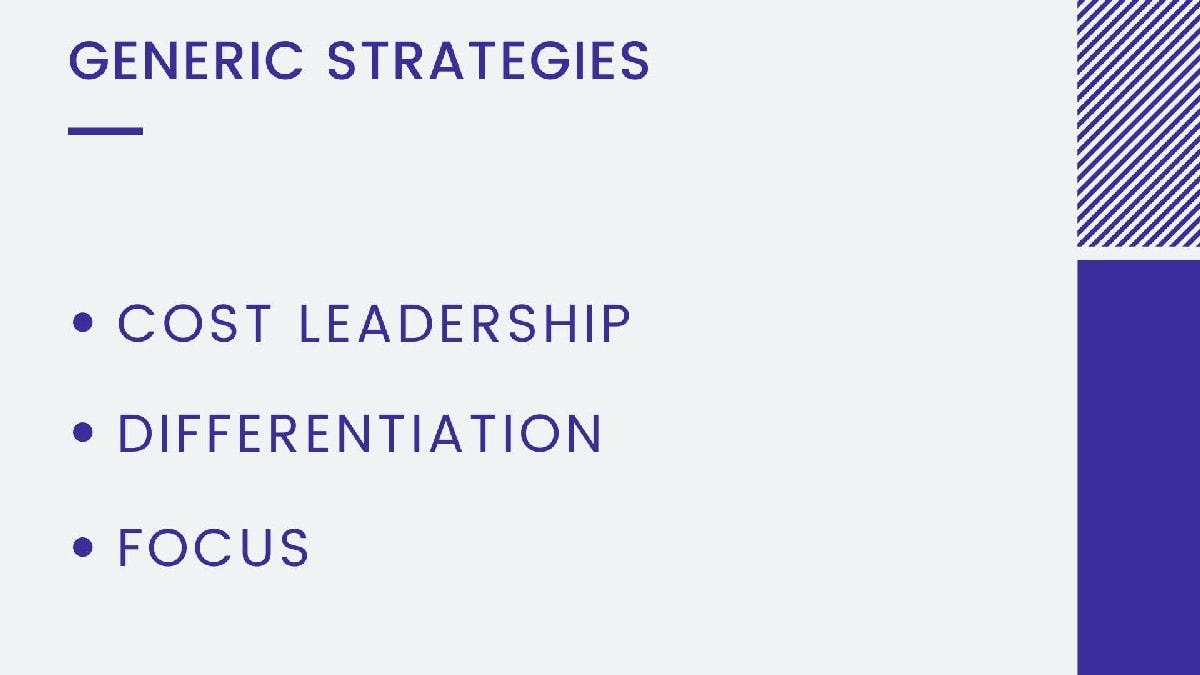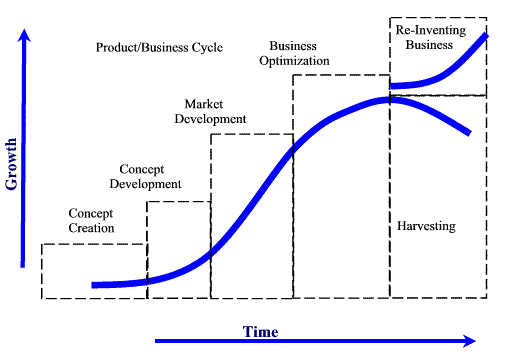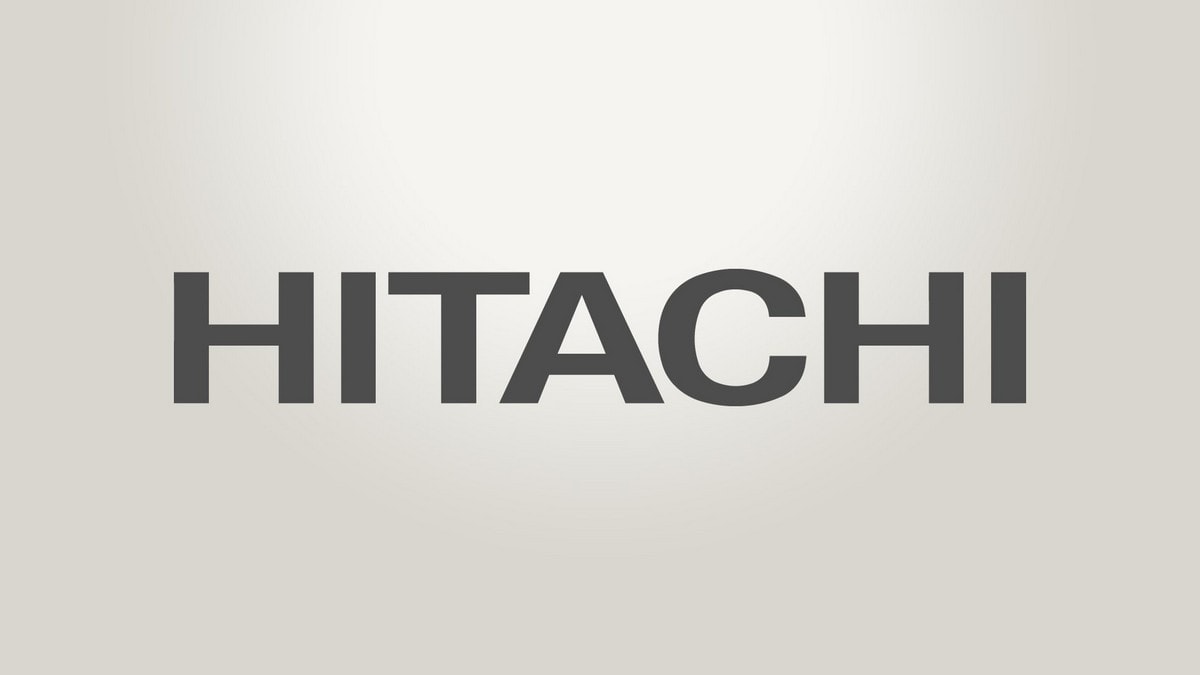
Porters Generic Strategies Explained | Marketing91
Porters Generic Strategies Explained
An economic researcher, Micheal Porter, in the early 1980s, studied the competitive behavior that comprise successful behavior. The purpose of his study was to determine the different methods or ways that a company adopts to gain a long-term advantage over its competitors. The outcome of his research was three interconnected concepts that successful companies use to develop vital operating procedures and to gain a competitive advantage over their competitors.
In this article, you will learn about the porter’s techniques, also known as generic strategies that you can learn and adapt in your own business to stay ahead in the competition.
Table of Contents
Definition of Generic Strategy
Generic strategies are four generic strategies that were developed by Micheal Porter that a company uses to gain competitive advantages.
What are the generic strategies?
Porter’s generic strategies
1. Cost Leadership
Cost leadership strategy is a strategy to gain a competitive advantage by manipulating the cost of production. The manipulation of cost can be done in two ways such as,
1. By minimizing the price to increase the profits
By reducing the cost, a company can save a tremendous amount of money. That money can be used in other ways, such as paying high salaries to employees to attract talent in the organization or spending money on product research so that more effective products can be developed.
2. Keeping low selling costs to increase the market share of the company
A company sells its products at lower prices to increase their market share. When a company sells the right quality products at low prices, then it gains the loyalty of its customers as well as enhances the sales of its products. In this way, both the profile of a company as well as the total revenue of the company increases.
How is this possible for companies to implement a cost leadership strategy? There can be various reasons that make a company implement cost leadership strategies such as having access to capital, which can be used for product research and developing infrastructure or technology. The latest technology and infrastructure helps the company to produce goods at a low production cost. In this way, the business becomes capable of lowering the selling cost of the products.
In addition to this, by adopting the latest technology and infrastructure, the business enables to reduce the standard operating costs. Companies also make sure that there is an adequate flow of products from the point where they are created and to the end when they are finally displayed for sale to the final consumer. Therefore, it is right to say that proper logistics is also necessary to implement a cost leadership strategy.
The best example of a company that has successfully implemented a cost leadership strategy to become successful and gain a competitive edge over all its competitors is Walmart. Walmart became successful by selling goods at the lowest prices. There are several competitors of Walmart in the market that were unsuccessful in matching the lowest rates of Walmart time and again.
Walmart has gained a competitive advantage and became successful in achieving the low selling price of goods because of its efficient supply chain. Moreover, it supplies its products from foreign, less expensive markets. In this way, it becomes capable of achieving low selling, which is difficult for its competitors to compete.
The cost leadership strategy is one of the best strategies that a company can adopt to gain a competitive advantage and to increase its market share. However, the implementation of a cost leadership strategy is possible only by exploiting smart business methods.
2. Differentiation
In the previous Strategy, companies make use of low prices of goods to attract customers. However, keeping the cost of the products is one strategy and adopting the differentiation method is also an effective strategy to attract customers. The meaning of differentiation strategy is to create unique and attractive products to attract customers.
Several concepts are involved in this strategy too. But the effective implementation of a differentiation strategy is only possible by playing to customers’ perception. A company can offer any of the following things to attract customers by creating the impression of uniqueness. For example:
1. You can promote the durability and utility of the product to attract customers. By doing this, you create a sense of value for the product in the eyes of customers.
2. You can offer a support system for the product or service that you sell. In this way, you make your customers believe that you are accountable for the products that you sell. This helps in increasing the trust of customers in you.
3. By developing a positive brand image, you attain the long-term loyalty of your customers.
Companies that adopt a differentiation strategy entertain their customers by satisfying the unique needs of customers. Therefore, they get the advantage of selling their goods at premium prices by selling products at premium rates that generate high profits.
If you are also planning to implement generic differentiation strategy, then you are required to take account of the following points such as
1. Persistent research and innovation:
Research and innovation play a vital role in the success of a company. Only by adopting the latest technology you can meet the frequently changing expectations of your customers.
2. Marketing and promotional teams:
If you are going to enter the market by selling unique products, then the role of marketing and the promotional team is very crucial for your business. These are the individuals that will create awareness about your product in the market and attract your relevant customers to your business by making them aware of the existence of your business. Therefore, don’t forget to invest in a good marketing and promotional team.
3. Producing products of high-end quality:
Lastly, make sure that you are creating products that are of high quality. If you want your customers to stay loyal to your business, then you need to develop products of high quality and the product that not only meets but also surpasses the expectations of your customers, then only your customers will stay loyal to your business for a longer time.
One of the successful examples of the companies that have adopted generic differentiation strategy is Apple. At present, Apple is a leading company among companies that sells smartphones and various other electronic devices. Apple’s iPhone is the best example of a differentiated product. Every year Apple introduces a high-quality smartphone that provides a unique experience to its users. Apple makes the use of innovation and technology to produce High-end quality products; because of this, it is successful in gaining the loyalty of its customers.
3. Focus
The strategies, as mentioned earlier, cost leadership and differentiation was focused on a large number of customers. But this generic strategy focuses on a small group of customers that narrow down the focus of efforts of a company on a small group of customers or a niche market. Companies that adopt this generic strategy engaging the customers of specific demographic mainly focuses on fulfilling the unserved needs of customers.
In this way, the company becomes successful in gaining loyal customers for an extended period. However, the generic focus strategy is a little risky as the products that the company offers does not attract the customers outside of the demographic group. Therefore, the entire business of the company solely depends on the spending habits of customers part of this small demographic group.
The focus strategy also focuses on three variants, such as :
1. Differentiation focus
The differentiation focus variant focuses on generic Strategy focuses on the unique demands of the market to maximize the efforts. That means the company creates a unique product for the customers part of a small demographic.
2. Cost focus
Cost focus means the company produces cost-effective products for the customers part of a small demographic. That means they fulfill the requirements of the customers part of a niche market and provide them products at cost-effective prices.
3. Focus – Best value
Focus – The best value means the company offers products and services to small groups of customers but provide them at the best price as compared to the other products and services available in the market.
In addition to this, the focus strategy is also about maintaining the relationship between production cost and delivery. Several large companies have acquired small companies that were serving the needs of low demographics. For example, PepsiCo. Is one of the largest consumer packaged goods company that has received several smaller companies such as Tropicana, Frito-Lay, and Naked juices that have helped it to attain a competitive edge in the beverage industry.
The generic strategies that you have learned in this article are necessary for porter’s generic strategies. Other plans were developed by keeping porter’s generic Strategy as a base. After reading the article, you must have analyzed that no approach is better than the other Strategy. The choice of a particular strategy depends on the kind of products that the company produces and the segment of the market that it wants to focus on.
How to choose the right Strategy?
One can follow the following steps to choose the right generic Strategy for their business.
Step 1. : Conduct a SWOT analysis for your business:
By conducting a SWOT analysis, you will learn about the strengths and weaknesses of your company. In this way, you will learn about the threats that your company might face in the future, and you will also learn about the opportunities available for your company.
Step 2.: Make an effort to hold the market of your industry:
Porter has developed a model known as Five Force analysis. Use this method to determine the profit potential of your company. The following are the five forces that influence the profit potential of a company.
1. The power of the customers.
2. The power of the suppliers.
3. Internal competition.
4. The threats of new entrants in the market.
5. The availability of comparable products in the market.
Step 3. Compare the outcomes of the first step with the second step:
By comparing both the results of SWOT analysis and five force analysis, you can determine which porter’s generic Strategy will suit most for your business.










